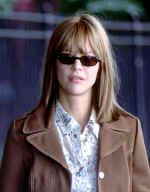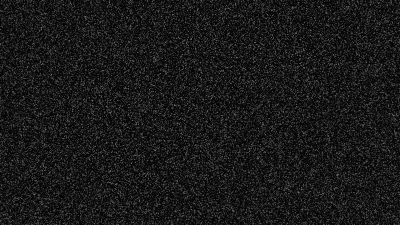By: debbie lynn elias

The best part of “In the Cut” is when it ends. The worst part is that you have to endure 118 minutes of senseless, gratuitous repugnance to reach the end and when it’s over, you will definitely NOT want what Meg Ryan’s having.
Frannie Avery is a repressed New York City high school teacher who fancies herself as an author on the side. As part of the research for her book on Black slang, she hooks up with one her students in a bar in a rather unsavory part of town. On her way to the restroom (hope her mother taught her about seat covers) she gets a little voyeuristic, enjoying the sight of a tattooed man being pleasured by a woman with blue metallic fingernails in the shadows of the basement. The following day Frannie receives a visit from homicide Detective Malloy who is investigating the murder of one, Angela Sands, whose severed head was found in the garden under Frannie’s window. Although it seems the subject of Frannie’s voyeuristic adventure is a suspect in the murder, she denies any knowledge of tattoo boy to Malloy (especially since Malloy has the same tattoo on his wrist), instead focusing her interest on the erotic chemistry passing between the two of them.
Attacked by a masked man near her home, Frannie escapes. Surprisingly (or maybe not so) Malloy shows up and gets Frannie to re-enact the assault but with an added twist – her re-enactment leads to an erotic sexual encounter with Malloy. She again gets accosted, this time by her ex, a man on the edge of a nervous breakdown. Adding more confusion to the storyline is Frannie’s student Cornelius who turns in his homework assignment – a blood-splattered paper defending the innocence of clown killer John Wayne Gacy. And the hits just keep on coming, as does Malloy, who seems to find plenty of time in the midst of all these murder investigations to still lead Frannie down the primrose path of some rather gruesome, kinky, lurid, explicit, no-holds- barred sex.
Meg Ryan, hoping to be seen in a light other than America’s perky sweetheart, succeeds. With a dowdy brown wig and over-inflated lips that make her look like a cross between Nicole Kidman in “Birthday Girl” and Melanie Griffith on any day after seeing her plastic surgeon, brown contact lenses and no make-up, Ryan looks horrific to the point of being comical. As if that transformation wasn’t enough for her, she goes even farther with full frontal nudity and sex scenes so graphic, they had to be cut from the release print just to get an R rating. (Don’t worry. I’m sure the out-takes will show up in the Director’s Cut DVD.) Ryan may shed her good girl image with this film, but replaces it with nothing. She spends the entire film looking frumpy and having sex. There is no acting. No heartfelt emotion. No real storyline. Her performance here is nothing more than a blank canvas.
Jennifer Jason Leigh appears as Frannie’s somewhat slutty half-sister Pauline. Again, no real character development and a waste of Jason Leigh who comes across better than Ryan only due to her natural on camera presence. Kevin Bacon, who is riveting in “Mystic River” is also less than blasse as Frannie’s ex as he spends his screen time walking around in scrubs declaring himself insane. If you’re looking to see this film for Bacon, don’t. Go see “Mystic River” instead. Sharrieff Pugh, who has turned in some fine performances on television’s “Law & Order”, appears here as Frannie’s student Cornelius and comes across as nothing more than a student with a crush. The only real acting highlight is Mark Ruffalo who gives the best performance of his career. He exudes sexual urgency and excitement but balances it with the day-to-day sensibilities of a seasoned homicide cop giving some depth and personality to the character. Too bad this talent is wasted in this piece of garbage.
Based on the novel by Susanna Moore, Oscar winner Jane Campion directs and co-writes the screenplay with Moore. Making the implausible even less plausible, Campion and Moore have created characters incapable of exchanging dialogue and even worse, have created dialogue and scenarios so forced and unnatural that what is written is impossible to be believably uttered. Well known her use of use of period inserts to provide backstory, Campion does so again here. Although from a director’s standpoint I can see where Campion is trying to go with use of object symbolism as a tie in between past, present and future, the device fails miserably. Disappointingly, while Campion’s last three films, “The Piano”, “Portrait of a Lady” and “Holy Smoke” featured strong female performances as the lead, same is not the case here. There is no real strong lead of any kind. Ruffalo’s performance is due totally to his raw talent as opposed to decent scripting, characterization or direction. Even more miserable is the gratuitous, distasteful, in your face, sexual encounters between the leads. As stated by Ryan in recent interviews, it was so essential to Campion to properly convey the sexual scenes that Campion bathed the closed set in exotic incense to “enhance the mood for the fornication scenes.” Ruffalo, on the other hand, has admitted that “the result thrilled his wife” and “did wonders for their love life.” Has director Campion traded in her director’ cap for one of sex therapist?
Technically, however, kudos must be given to Dion Beebe. Fresh off his cinematographic success with “Chicago”, Beebe succeeds in giving “In the Cut” a gritty, edgy ,yet surreal feel that works well with Alexandre de Franceschi’s stylish editing. Their combined effort produces an exquisitely high caliber art-house picture with high production values.
“In the Cut” – if what we have on screen is the best part of the film that made the cut, one can only imagine the dearth of unsavoriness that landed on the cutting room floor – the place this entire film should be.
Meg Ryan: Frannie Avery Mark Ruffalo: Detective James Malloy Jennifer Jason Leigh: Pauline Kevin Bacon: John Graham
Directed by Jane Campion. Written by Jane Campion and Susanna Moore based on a novel by Susanna Moore. A Screen Gems release. Rated R. (118 min.)












